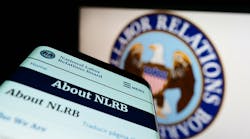OSHA Can Help. Really.
“Toro, toro.”
“But my dog is a dependent, Mr. Taxman. He can’t even open a can of food by himself.”
“Hey, OSHA. Do my distribution operations look dangerous to you?”
All three of these statements connote a tempting of fate — the proverbial waving of a red flag at a powerful potential opponent. The first two do have dangerous consequences, but more and more managers are saying something similar to quote number three.
Dixon Churchill did, but he was talking to the education side of OSHA, not the compliance side. Sound like good cop/bad cop? Well, in this case the good cop is really a consultant who wants to help you make your operations safer and more productive.
OSHA has a consultation service that offers free on-site safety and health advice. It also has a Voluntary Protection Program by which companies have reduced lost-workday rates to 80 percent below industry averages. (For more information, go to www.osha.gov.)
Churchill, environmental health and safety assistant manager at Toyota Industrial Equipment Manufacturing’s Columbus, Indiana, plant, started consulting with OSHA’s good-cop side back in 1995. He sent TIEM people from every level of the organization to OSHA’s 10-hour classes to learn more about industrial safety and health.
Churchill now works with Indiana OSHA’s Bureau of Safety, Education and Training (BuSET) to administer these classes himself for TIEM. Topics include powered industrial truck operator training, lockout/tagout, machine guarding, electrical safety, hazmat and bloodborne pathogens. That’s education. How does consulting work?
“When you request an in-house inspection, you agree to fix anything OSHA identifies as a problem,” Churchill answers. “There are no financial penalties unless you don’t fix them.”
This TIEM plant has outgrown the scope of the OSHA in-house inspection program. The service is aimed more at helping small and mid-size plants that can’t afford outside auditors. However, Churchill still calls OSHA regularly to stay on top of standards development. He recommends the program to any company that wants to ensure safety and compliance.
“If you volunteer for an audit, you’ll identify needs,” he says. “Then if you do have a compliance inspection at some point, you’ll be able to show OSHA the countermeasures performed. That will likely reduce any financial penalties if they see you’ve been proactive.”
OSHA’s good cop has been getting some favorable press lately for helping rescue workers stay safe while working at the site of the fallen Twin Towers in Manhattan. About 400 OSHA personnel are directly involved in consulting with and assisting the people on site. The agency wants all U.S. companies to feel comfortable about consulting with them as a partner in occupational safety and health.
Let’s hope that happens. The more fresh starts that come out of this disaster, the better.
As you might have noticed, MHM is entering 2002 with a fresh start of its own. We hope you like our new look, but, more importantly, we hope the information provided helps you see new possibilities in the performance of your daily duties. As this month’s cover story reports, world events are changing the way we do business. That’s a challenge, but MHM will try to help you turn it into an opportunity.


